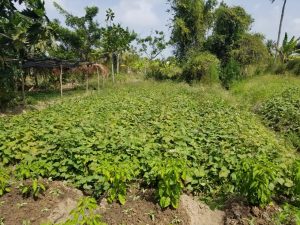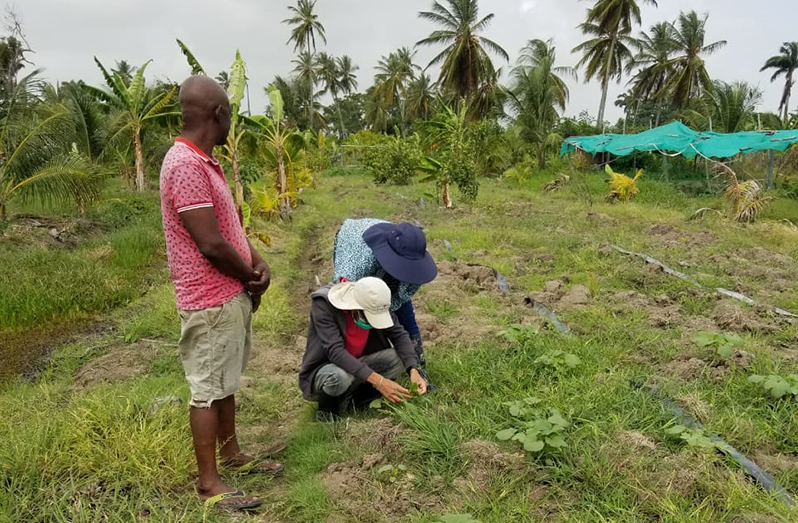THE coconut is a permanent crop that has the potential of being a huge income earner for farmers and the country as a whole. It is known that palms, depending on the variety, may take between two and five years to reach maturity and start to produce coconuts. As such, the National Agricultural Research and Extension Institute (NAREI) encourages farmers to engage in intercropping practices to earn as their coconut palms grow to maturity.
 To this end, NAREI has been partnering with local farmers, the Caribbean Agricultural Research and Development Institute (CARDI) and International Trade Centre to accelerate the coconut industry. Crucial to this is having productive intercropping of coconut through climate-smart agriculture.
To this end, NAREI has been partnering with local farmers, the Caribbean Agricultural Research and Development Institute (CARDI) and International Trade Centre to accelerate the coconut industry. Crucial to this is having productive intercropping of coconut through climate-smart agriculture.
As part of the agreement between the above-mentioned agencies, NAREI is responsible for guiding lead farmers in establishing open- field intercropping systems in newly installed or producing coconut plantations.
The fundamental aim of this project is to enhance the resilience and productivity of smallholder coconut farmers through the adoption of climate-smart agricultural practices in two of Guyana’s major eco-zones. This initiative demonstrates how farmers could secure multiple income options through the production of coconuts and associated crops.
NAREI is undertaking these initiatives within target communities. The intention is to include a larger number of farmers in different communities.
On the coastal region, two lead farmers who have been in the coconut business for many years are participating to better their farming systems and gain maximum returns based on their cost of production and maintenance of crops on their farms. One farmer hails from Friendship/Buxton, and the other from the village of Victoria, ECD.
 In Friendship, the farmer is currently cultivating various cash and orchard crops, along with a few tuber crops, spreading over an area of six acres. The farmer also cultivates coconut on this same plantation, where he planted several varieties; three-year, 18-month dwarf, and five-year. While at Victoria, the farmer also plants several cash, tuber, and fruit crops along with several coconut varieties of varying ages. The varieties planted at Victoria are: 18-month dwarf, Panama tall, Malaysian green, and Jamaican tall. Coconuts produced at both farms are usually being sold on the local market, for water or as dried coconut.
In Friendship, the farmer is currently cultivating various cash and orchard crops, along with a few tuber crops, spreading over an area of six acres. The farmer also cultivates coconut on this same plantation, where he planted several varieties; three-year, 18-month dwarf, and five-year. While at Victoria, the farmer also plants several cash, tuber, and fruit crops along with several coconut varieties of varying ages. The varieties planted at Victoria are: 18-month dwarf, Panama tall, Malaysian green, and Jamaican tall. Coconuts produced at both farms are usually being sold on the local market, for water or as dried coconut.
A lot size of one acre was selected on each farm, cleared and planted with crops chosen. At Friendship, the plot was further divided into two half-acre plots, where hot pepper; Tiger teeth variety, and Sweet potato; the Beauregard variety were planted. Both crops are at the harvesting stage, and data is being collected by NAREI personnel to measure the profitability of the said system.
Also, at Friendship, half acre of Okra; Clemson variety, and half acre of Hot pepper were planted, where the Okra is at the production stage, and the pepper is flowering. NAREI’s Research and Extension staff usually interact and visit farmers on a weekly basis, providing them with guidance and materials needed to complete the various agro-practices for each crop.



.jpg)











